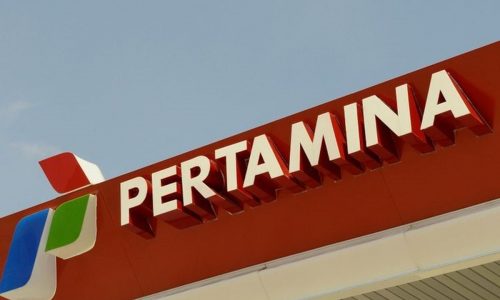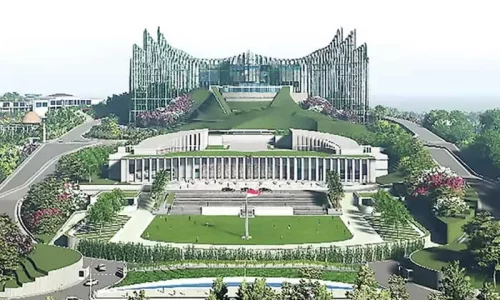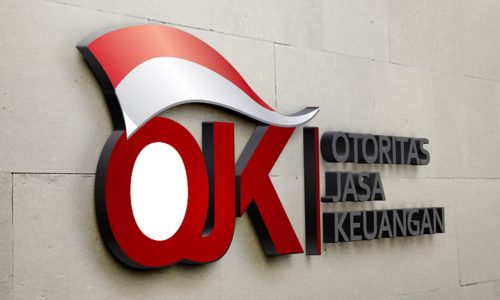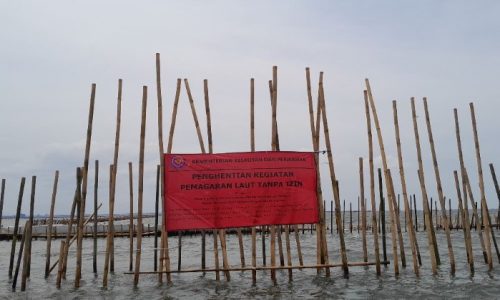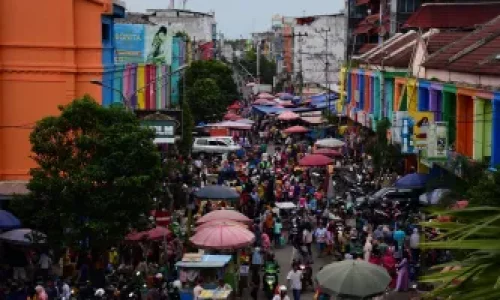A group consisting of Indonesian entities and companies, which includes PT Industri Kereta Api (Persero) (INKA), BRIN, UGM, ITS, ITB, and LPDP are developing an Indonesian-made high-speed train called “Merah Putih” valued at IDR 4 billion.
Agung Dwi Cahyono, Senior Manager of Public Relations and Representative Office at INKA, revealed that this project is a collaborative effort among various entities, including the Sepuluh Nopember Institute of Technology (ITS), Bandung Institute of Technology (ITB), Gadjah Mada University (UGM), the National Research and Innovation Agency (BRIN), the Education Fund Management Institute (LPDP), and INKA itself.
In this initiative, INKA is responsible for designing and constructing the aluminum train cars and body, while BRIN, Indonesia’s research agency, will be the technology tester.
“Merah Putih High-Speed Train is a collaboration between INKA Manufacturing, ITS, which had already received research funding, and BRIN, which is responsible for testing. BRIN was formerly known as BPPT (Agency for the Assessment and Application of Technology) and has the facilities and expertise for testing and research,” Agung explained.
While, ITS, UGM, and ITB are involved in researching and designing aspects related to aerodynamics and the propulsion system of the Merah Putih High-Speed Train.
Agung further stated that the current phase, which involves designing the aluminum car body and bogies, will continue into the next year. INKA plans to start the prototype construction in 2024 for BRIN to conduct tests.
“Our target for this year is to work on the plans, and next year, my team at INKA will focus on the actual design work. We’ll gradually begin purchasing materials such as aluminum and steel for the bogies. The goal is that after it’s completed next year, we will ask BRIN to test it,” Agung added.
Once all these processes are finalized, INKA and the agencies involved will regroup to commence the construction of the high-speed train prototype, with a launch expected in 2026.
Regarding the funding required for the development of the Merah Putih High-Speed Train, Agung mentioned that the project would need an investment of approximately IDR 3-4 billion. This funding comes from research grants provided by LPDP and other relevant institutions, including INKA.
“Investment ranges from IDR 3-4 billion, as far as I know. However, we’re not entirely dependent on this. We strive to realize a sharing of funds between INKA and the related institutions. Maybe we’ll receive support from LPDP for research, but fundamentally, we will continue with the project, even without receiving funds,” said Agung.
Although Agung acknowledged the limitations in research funding from INKA, he noted that the synergy with various institutions has made the research funding more accessible, enabling a smoother development process.
Differences between Merah Putih and Whoosh high speed train
Agung explained that the primary difference lies in the train’s maximum speed. Unlike Whoosh, which can reach up to 350 km/h, the Merah Putih High-Speed Train is designed for a maximum speed of 250 km/h.
“Whoosh can reach speeds of up to 350 km/h, while our program aims for a speed range between 230 and 250 km/h,” Agung clarified.
He further emphasized that the Merah Putih development plan represents a significant technological leap for Indonesia’s railway industry. However, it may not match the level of China’s Whoosh high-speed train.
Agung explained that the Directorate General of Railways (DJKA) is currently in the process of upgrading regular trains to semi-high-speed trains capable of reaching speeds of 180 km/h, primarily because the majority of rail crossings in Indonesia, including Jakarta-Surabaya, have a gauge width of 1,067 millimeters.
For high-speed trains, a minimum gauge width of 1,435 millimeters is required. Therefore, to develop a high-speed train with a maximum speed of 350 km/h, extensive modifications are needed in terms of technology and infrastructure, which are currently not sufficient.
As for the Merah Putih, Agung emphasized that it’s more realistic to aim for speeds of up to 250 km/h. He didn’t rule out the possibility of advancing high-speed train technology in the future. However, he believes that a gradual approach involving collaboration among all stakeholders will better prepare the entire system.
“It’s better to take a gradual approach. A speed of 350 km/h, for instance, requires tunnels to eliminate obstacles like wind. We can technically do it, but the question is, ‘Can we do it with what’s available?'” Agung said.
Despite the challenges, Agung assured that with the Merah Putih High-Speed Train, the travel time between Jakarta and Surabaya would be significantly reduced. With an average speed of over 200 km/h, the estimated travel time between the two cities is only 3 hours and 40 minutes.
“High-speed trains are designed to operate at speeds above 200 km/h. Assuming the distance between Jakarta and Surabaya is 750 km, the journey would take at most 3 hours and 40 minutes,” he stated.



